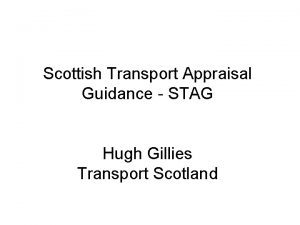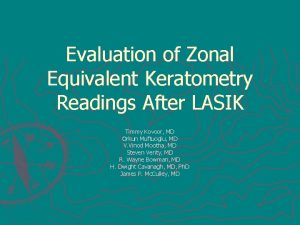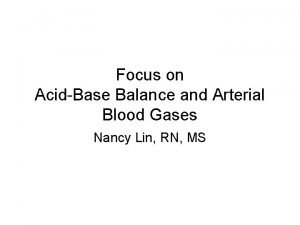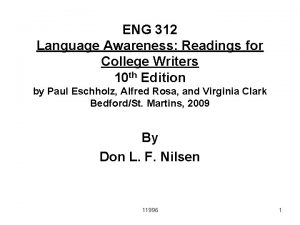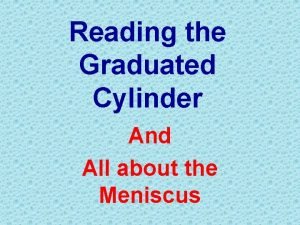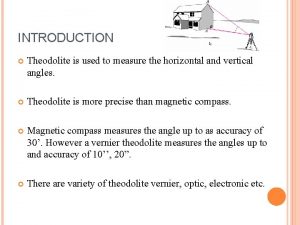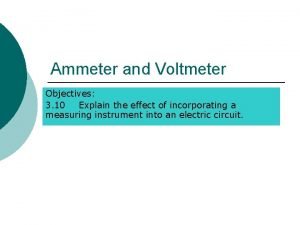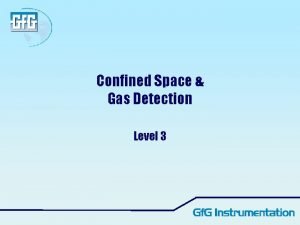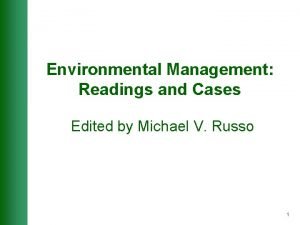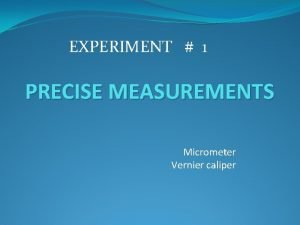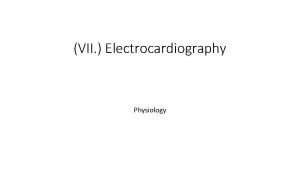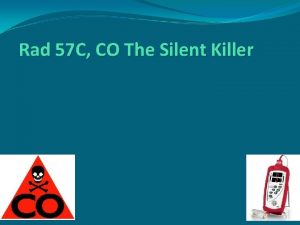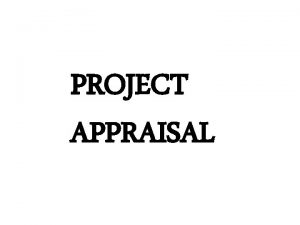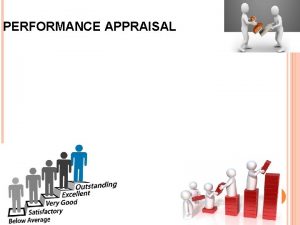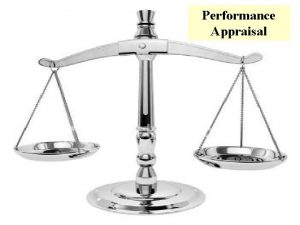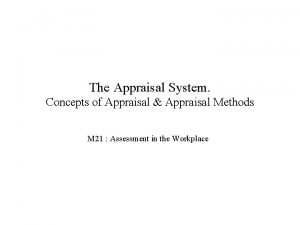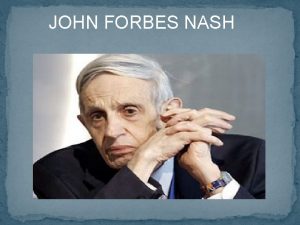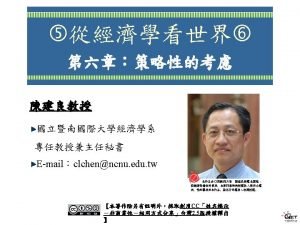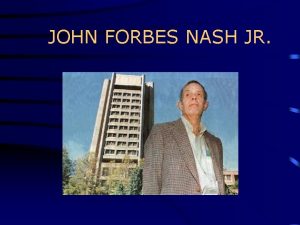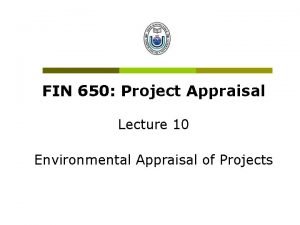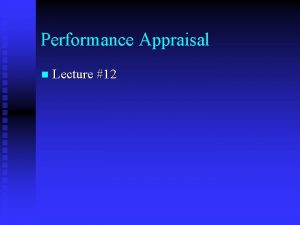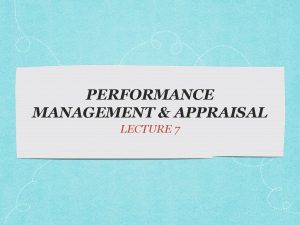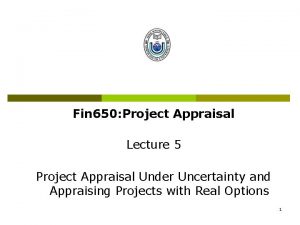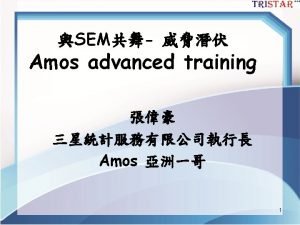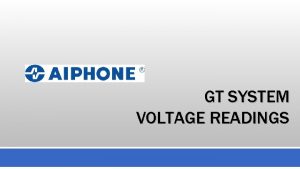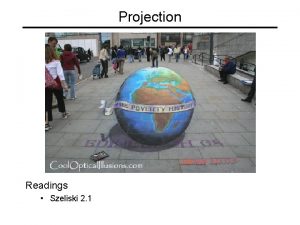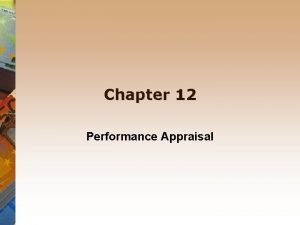11 TRANSPORT APPRAISAL Readings for Lecture 11 Nash







































































- Slides: 71

11. TRANSPORT APPRAISAL

Readings for Lecture 11 • Nash, C. (2015). When to invest in high speed rail. Journal of Rail Transport Planning & Management, 5(1), 12 -22. • Preston (2013): The economics of investment in HSR

Learning Outcomes • • Understand why we appraise Understand main methods of appraisal The economics of high speed rail When to invest in high speed rail

11. 1 CBA

Transport investment • Transport investment involves expenditure on particular project in situation of limited resources. • The task is to choose the project that brings maximum return

Appraisal • Appraisal is a way of predicitng how much utility we as society will derive from the expenditure on one project compared to another, by predicting the utility that will arise from each • It is fundamental to realise that, inherent in appraisal there is some kind of prediction or forecasting required

Cost benefit analysis (CBA) • CBA estimates and totals up the equivalent money value of the benefits and costs to establish whether they are worthwhile. • The result of CBA is a number; this shows the ratio of benefits to costs. • The basis of CBA is that a monetary value needs to be allocated to all benefits and costs

How does CBA work? • • • Choose options Choose length of time Use a predictive model Calculate time savings Take away benefits from cost to find out whether benefits exceed costs and, if so, by how much

Key elements of CBA • • • Project appraisal period The benefits that are assessed Forecasting and modelling Present value Values of time Accident valuation Operating costs Revenue Discounting

Criticism and problems with CBA • Valuing time savings • Discount rate and length of time of project appraisal • What does NPV show us? • Equity and distributional effects • Project pricing – optimism and inaccuracy

Too low residual value? • See: Jones et al. (2014)

Exercise (1) – Discount rate Year 2003 2006 2008 2010 2014 2017 Benefit (undiscounted) (£) 35, 000 60, 000 100, 000 25, 000 40, 000 70, 000 • The effect of the discounting rate and project time period • First, discount the following stream of benefits from a project and derive a total NPB for price base year 2002. Use a discount rate of 3. 5 per cent.

Exercise (2) – Value of licence Suppose you are interested in operating a taxi and you are considering purchasing a taxi operating certificate form an existing operator. You estimate that the current operator makes annual excess profits equal to 100. 000 CZK. At a 5% rate of interest, what is the maximum price you are willing to pay for this license? Would you be willing to pay this same price if the interest rate were 10%?

Exercise (3) – Investments „needs“ Critique the following statement: “We currently do not have sufficient airport capacity to meet the continuing growth in airline traffic. In order to avoid gridlock at our nations airport, we need to build additional airports”.

Exercise (4) – Value of time Decide which values of time you should use for a person who is travelling by underground train on works’ business; and for a person who is travelling to work by bus. Why do you think that values of time when travelling in working time are highest for travellers on the underground and lowest for those on the bus?

11. 2 The Economics of Investment in High Speed Rail based on J. Preston (2013)

Introduction • Origin in Japan - Shinkansen (1964) • Defined as new rail lines capable of operating speeds of 250 kilometres per hour or more • World HSR network (2013) – 22. 000 km • China, Japan, France, Spain • Germany, UK, Italy, Korea, Taiwan, …… • HSR extremely costly • Better understanding of the economics of HSR needed

Design • Largely freestanding systems (Japan, China) x systems integrated with conventional rail (France, Spain, Germany) • HSR may penetrate city centres using conventional tracks (France) or new tracks (Japan) or may serve edge of city locations (China)

Aims • Capacity = separating fast and slow trains • Speed = rail to compete with air • • • Promoting national champions (in supply) Journey time reliability (UK) Economic development (China) Political integration/centralization (Spain) Enviroment (UK)

Appraisal and Evaluation • In both ex-ante appraisal and ex-post evaluation of HSR cost-benefit analysis is the dominant methodological tool • Sometimes distributional impacts are important

Benefits of HSR (UK evidence) • • 30% revenue 50% users time savings 10% reduction of rail overcrowding 10% wider economic benefits • Benefits from reduced rpoad congestion and enviroment improvement were relatively minor

HSR traffic (European evidence) • • 30% abstracted from air 30% abstracted from classic rail 15% from road (predominantly car) 25% generated

Capital costs • High capital costs are required to achieve grade separation, curvature and gradient • Costs higher when high population densities, high land values and unfavourable topography • Costs may vary from below EUR 10 million per km (China) to over EUR 100 million per km (HS 1 approaches to London) • Economies of density important • Operating speed is a key driver of capital costs

Demand • High degree of variability in demand for HSR schemes from below 4 million passengers per annum (Madrid-Seville) to over 200 million passenger per annum (for the Tokaido and Sanyo Shinkansen) • Determinants: population, spatial structures, fare levels, HSR stations location, national and sometimes regional borders • Demand estimations: gravity model

Competition • Intermodal competition – very intensive, low cost airlines • Italy – HSR open access competition between Trenitalia and NTV: o 30% reduction in fares o 45% increase in services o 30% increase in demand o It is not clear whether this competition will be sustainable • High access charges (typically 25 -45% of HSR revenue) can limit open access competition

Analysis • Paralysis by analysis (UK, US) – many studies, minimum service • Build and see (China, Spain) – large increases in HSR network • Step by step x big bang approach

Test for HSR investment 1. Does HSR make a commercial return? 2. Does HSR make a social return? 3. Does HSR make a social return including impacts on other transport systems and wider economic benefits? 4. Does HSR have social returns when qualitative wider benefits are taken into account?

Conclusion • A key metric is the level of passenger demand with gravity model formulations providing a useful basis for high level startegic forecasts in advance of subsequent detailed modelling

11. 3 When to invest in HSR? Nash (2015): When to invest in HSR?

Introduction This paper starts by a general review of the costs and benefits of high speed rail, of how they are measured in cost–benefit analysis and of the circumstances in which benefits may be expected to exceed costs. Two approaches are taken to the latter; first, examining models in which values of key parameters are varied to see in what circumstances benefits exceed costs, and secondly looking at the limited evidence from ex post studies, mainly for France and Spain.

EU policy • European Commission calling for a trebling of the kilometres of high speed line in Europe by 2030. • Yet high speed rail is an enormous investment, and it is necessary to consider very carefully in what circumstances such an outlay is justified.

HSR costs and benefits

Construction costs of HSR (2005 prices)

Construction strategy • Given these high costs, it is obviously sensible to ask whether the costs may be reduced by using upgraded conventional tracks for all or part of the network. • Much will depend on what already exists and whether it has spare capacity.

Operational costs • In terms of operating cost, it appears that high speed trains are no more expensive than conventional trains when the capital cost of the vehicles is taken into account. • Whilst energy consumption and maintenance costs are higher than for conventional trains, high speed means staff and rolling stock can achieve much higher utilization rates than conventional rail, offsetting the increased costs

External costs • Of the external costs of high speed rail projects, noise, global warming and loss of amenity through land take and visual intrusion are the major issues. • Noise costs and loss of amenity can be minimised at the expense of additional capital cost, ultimately by tunnelling.

Capacity • The construction costs of high speed rail are largely fixed regardless of traffic. • High speed rail almost invariably requires a double track main line with cab signalling. • If all trains are identical in performance and leave the main line at high speed turnouts before slowing down to stop at any intermediate stations, then in principle operation at 3 min headways is feasible, offering 20 trains per hour.

Frequency • Some margin to recover from delays is necessary, but already France runs 13 trains per hour in the peak between Paris and Lyon • Japan 15 between Tokyo and Osaka. • Britain plans a peak service of 18 trains per hour on HS 2. • France is already operating trains with pairs of double deck units offering around 1000 seats.

Fixed costs of HSR • Only the costs of rolling stock, stations and depots vary significantly with traffic volumes. • Thus high speed rail systems have very high fixed costs which can only be justified by high traffic volumes.

Passengers • The world’s first high speed line, from Tokyo to Osaka, carried 39 m passengers in its first full year of operation (1965) and this had grown to 149 m by 2008 (Albalate and Bel, 2012) with the help of extensions to the line. • Paris–Lyon opened with 19. 2 m passengers in 1985, whilst the following Atlantic, North, Connection, Rhone-Alpes and Mediterranean lines all opened with similar numbers (Paix, 2010). • However not all lines have attracted traffic in these sorts of volumes. At the other extreme, the Madrid–Seville line opened with as few as 2. 5 m passengers, and Madrid– Barcelona with only 5. 0 m (Sanchez-Borras, 2010).

Population • Volumes of the necessary size may be obtained by linking individual very large cities (e. g. Paris and London) or by linking a chain of large cities so that flows between different cities are aggregated together and trains remain busy throughout the route (the so called ‘string of pearls’). • Japan is clearly a case of the latter, with 127 m people living at very high population densities mainly in large cities along the coastal strip.

Rail competitiveness • Clearly the volume attracted is not simply a matter of the population but also its propensity to travel and the competitiveness of rail with other modes. • An upgraded conventional rail system may achieve a commercial speed of the order of 160 kmph, whilst for high speed rail designed for 300 kmph, 240 kmph may be feasible. • The journey time for each in terms of hours for certain distances is shown in Table.

Comparative journey times for upgraded conventional and high speed rail

Competition with car • However, competitiveness in terms of door to door journey time also depends on access to the station and frequency of service. • Car provides door to door service with no waiting time or schedule delay. • For a door to door journey largely on motorway, a 100 kmph average may be feasible. • If rail involves an additional 2 h in terms of access, egress and waiting time then even high speed rail will only be faster than car for journeys of well over 300 km

Competition with car • If part or all of the road journey is on congested or low speed roads, then rail may be competitive over much shorter distances, and even with upgraded conventional lines. • Indeed for shorter journeys, a frequent service calling at easily accessible stops may be preferable to a high speed service calling only at the very busiest stations and made up of high capacity less frequent trains, with other passengers having to change into the trains at these stops.

Competition with air • In comparison with air, it has been argued that – because for most passengers it involves less access, egress and waiting time – rail can compete with air provided the station to station rail journey is not more than 3 h. • Table shows that indeed rail generally has more traffic than air in these circumstances.

Rail share of rail/air market and rail station to station journey time

HSR/Air competition • However Table reveals a diversity of rail share for the same rail journey time. • A major factor here is the geography of the catchment areas. In a dense city with high quality public transport focused on the city center and frequent inter city services, access, egress and waiting time for rail may typically add less than 2 h to the door to door journey time • Whilst for a more remote airport, including time spent at the airport, for air it may be at least three. • In a low density city, with weaker public transport, the advantage of rail in access and egress may be much lower.

Time savings • Substantial time savings may be made by passengers previously using even upgraded conventional trains. • For car or air, the time saving depends very much on the length of journey; if the journey is close to the breakeven point between the modes then the time saving may be much smaller. • However, it is not always appreciated that many aspects of comfort and convenience may also be included in the value of (generalised) time used in economic appraisal.

Values of time used in British rail appraisals (GBP per hour; 2010 prices and values)

Capacity • Building a high speed line which will divert a substantial volume of traffic from an existing route not only creates a huge capacity for high speed traffic itself • It may also permit growth of other types of traffic on the existing line. • Removing all the fastest services from a route will reduce the spread of speeds and thus release more capacity than simply the number of paths formerly taken by the diverted trains.

Diversion from other modes • The benefits of diversion from other modes take the form of reductions in externalities – congestion, accidents and emissions. • Against these must be set any excess of mode specific taxes and charges over and above marginal cost of infrastructure provision and maintenance.

Induced traffic and wider economic benefits • For induced traffic, the standard argument is that, since the person was unwilling to travel at the previous generalised cost and is willing at the new, the benefit must lie somewhere between that derived by an existing passenger and zero; • Agglomeration externalities. It appears that there is a direct link between accessibility and labour productivity, perhaps because in a larger labour market workers are better fitted to the jobs they do, innovations spread more quickly and there are economies of scale leading to better supply of business services.

In what circumestances will benefits exceeds costs? • There are essentially two approaches to answering this question. • The first is to construct a model and explore the values of variables for which benefits exceed costs. • The second is to examine actual ex post case studies.

Conclusion • It is concluded that the main factors determining economic success for high speed rail projects are construction costs, value of time saving per passenger and traffic volume and degree of congestion of existing transport networks. • The biggest uncertainty regarding the case for high speed rail surrounds the possibility of wider economic benefits.

11. 4 HSR around the world

Breakeven demand

Ex post evaluations • The number of ex post evaluations to be found in the literature is rather limited, and of course none are truly ex post inasmuch as they were generally undertaken something like 5 years after opening of a very long lived asset. • So these appraisals still involve forecasting, but forecasting from the position of knowing what the construction cost turned out to be and having data for the first few years of quality of service, traffic, revenue and operating cost.

Legal requirement • In France it is a legal requirement that all major government funded projects are subject to an independent ex post evaluation, to check that they have provided value for money and to learn lessons from any problems that are found. • Next slide provides the results of ex post appraisals of the first six French high speed lines.

HSR France

HSR network in Europe

France – extending network • Worse lines • Competition x financing

CBA of HSR in Spain

CBA of HSR in Britain Nash (2015)

CBA of proposed HSR in Britain Nash (2015)

Nash - China • Is HSR a solution to capacity problems?

Is it a good idea to build HSR in the Czech Republic?

The „threat“ of being excluded from HSR network in Central Europe

11. 5 Summary

Summary • CBA estimates and totals up the equivalent money value of the benefits and costs to establish whether they are worthwhile. • The main factors determining economic success for high speed rail projects are construction costs, value of time saving per passenger and traffic volume and degree of congestion of existing transport networks

Final Reading • Börjesson, M. (2014). Forecasting demand for high speed rail. Transportation Research Part A: Policy and Practice, 70, 81 -92.
 Stag appraisal
Stag appraisal 01:640:244 lecture notes - lecture 15: plat, idah, farad
01:640:244 lecture notes - lecture 15: plat, idah, farad Responsive reading christmas
Responsive reading christmas How to write keratometry readings
How to write keratometry readings Abg normal values
Abg normal values Stages of reading skills
Stages of reading skills Thanksgiving responsive reading
Thanksgiving responsive reading 312زبان عشق
312زبان عشق Graduated cylinder readings
Graduated cylinder readings Levelling head in theodolite
Levelling head in theodolite How to read ammeter
How to read ammeter Jcu map
Jcu map Confined space gas limits
Confined space gas limits Eb = p x a x t
Eb = p x a x t A vernier caliper is precise to __________ ?
A vernier caliper is precise to __________ ? Normal ecg readings
Normal ecg readings Rad 57 co readings
Rad 57 co readings Slide todoc.com
Slide todoc.com Bioflix activity membrane transport active transport
Bioflix activity membrane transport active transport Active vs passive transport venn diagram
Active vs passive transport venn diagram Active transport diagram
Active transport diagram Primary transport and secondary transport
Primary transport and secondary transport Pinocytosis vs phagocytosis
Pinocytosis vs phagocytosis Isotonic in biology
Isotonic in biology Primary vs secondary active transport
Primary vs secondary active transport Primary active transport vs secondary active transport
Primary active transport vs secondary active transport Passive transport vs active transport venn diagram
Passive transport vs active transport venn diagram Lek med former i förskolan
Lek med former i förskolan Bästa kameran för astrofoto
Bästa kameran för astrofoto Tillitsbaserad ledning
Tillitsbaserad ledning Nyckelkompetenser för livslångt lärande
Nyckelkompetenser för livslångt lärande Fri form dikt
Fri form dikt Tidbok yrkesförare
Tidbok yrkesförare Mästare lärling modell
Mästare lärling modell Fredsgudinna
Fredsgudinna Vilken grundregel finns det för tronföljden i sverige?
Vilken grundregel finns det för tronföljden i sverige? Verktyg för automatisering av utbetalningar
Verktyg för automatisering av utbetalningar Bamse för de yngsta
Bamse för de yngsta Kanaans land
Kanaans land Exspektans eller expektans
Exspektans eller expektans Ro i rom pax
Ro i rom pax Stig kerman
Stig kerman Vad är verksamhetsanalys
Vad är verksamhetsanalys Typiska novell drag
Typiska novell drag Varför kallas perioden 1918-1939 för mellankrigstiden
Varför kallas perioden 1918-1939 för mellankrigstiden Stål för stötfångarsystem
Stål för stötfångarsystem Tack för att ni har lyssnat
Tack för att ni har lyssnat Vishnuismen
Vishnuismen Cks
Cks Inköpsprocessen steg för steg
Inköpsprocessen steg för steg Påbyggnader för flakfordon
Påbyggnader för flakfordon Lyckans minut erik lindorm analys
Lyckans minut erik lindorm analys Strategi för svensk viltförvaltning
Strategi för svensk viltförvaltning Sura för anatom
Sura för anatom Egg för emanuel
Egg för emanuel Beräkna standardavvikelse
Beräkna standardavvikelse Rutin för avvikelsehantering
Rutin för avvikelsehantering Läkarutlåtande för livränta
Läkarutlåtande för livränta Treserva lathund
Treserva lathund Myndigheten för delaktighet
Myndigheten för delaktighet Tack för att ni lyssnade
Tack för att ni lyssnade Mall debattartikel
Mall debattartikel En lathund för arbete med kontinuitetshantering
En lathund för arbete med kontinuitetshantering Tobinskatten för och nackdelar
Tobinskatten för och nackdelar Tack för att ni lyssnade bild
Tack för att ni lyssnade bild Atmosfr
Atmosfr Var finns arvsanlagen
Var finns arvsanlagen Verifikationsplan
Verifikationsplan Rbk mätning
Rbk mätning Formel för lufttryck
Formel för lufttryck Presentera för publik crossboss
Presentera för publik crossboss Kung som dog 1611
Kung som dog 1611
